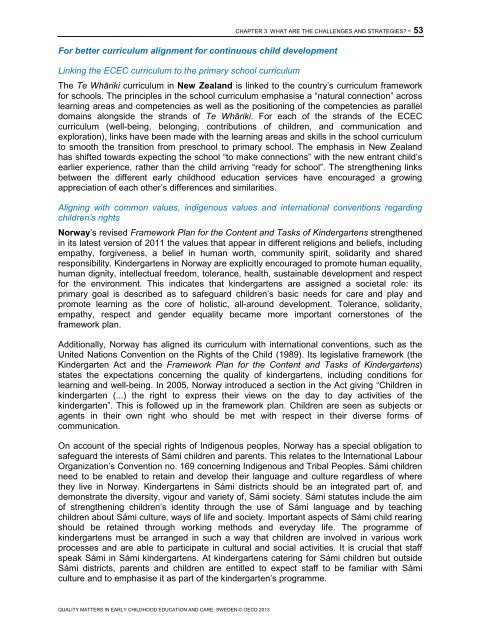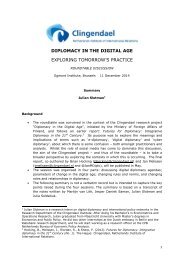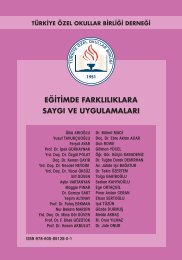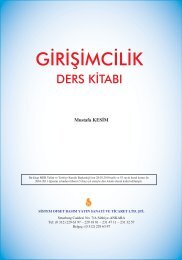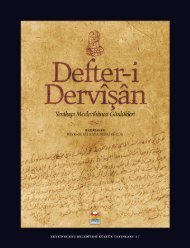SWEDEN%20policy%20profile%20-%20published%2005-02-2013
SWEDEN%20policy%20profile%20-%20published%2005-02-2013
SWEDEN%20policy%20profile%20-%20published%2005-02-2013
You also want an ePaper? Increase the reach of your titles
YUMPU automatically turns print PDFs into web optimized ePapers that Google loves.
QUALITY MATTERS IN EARLY CHILDHOOD EDUCATION AND CARE: SWEDEN © OECD <strong>2013</strong><br />
CHAPTER 3. WHAT ARE THE CHALLENGES AND STRATEGIES? - 53<br />
For better curriculum alignment for continuous child development<br />
Linking the ECEC curriculum to the primary school curriculum<br />
The Te Whāriki curriculum in New Zealand is linked to the country’s curriculum framework<br />
for schools. The principles in the school curriculum emphasise a “natural connection” across<br />
learning areas and competencies as well as the positioning of the competencies as parallel<br />
domains alongside the strands of Te Whāriki. For each of the strands of the ECEC<br />
curriculum (well-being, belonging, contributions of children, and communication and<br />
exploration), links have been made with the learning areas and skills in the school curriculum<br />
to smooth the transition from preschool to primary school. The emphasis in New Zealand<br />
has shifted towards expecting the school “to make connections” with the new entrant child’s<br />
earlier experience, rather than the child arriving “ready for school”. The strengthening links<br />
between the different early childhood education services have encouraged a growing<br />
appreciation of each other’s differences and similarities.<br />
Aligning with common values, indigenous values and international conventions regarding<br />
children’s rights<br />
Norway’s revised Framework Plan for the Content and Tasks of Kindergartens strengthened<br />
in its latest version of 2011 the values that appear in different religions and beliefs, including<br />
empathy, forgiveness, a belief in human worth, community spirit, solidarity and shared<br />
responsibility. Kindergartens in Norway are explicitly encouraged to promote human equality,<br />
human dignity, intellectual freedom, tolerance, health, sustainable development and respect<br />
for the environment. This indicates that kindergartens are assigned a societal role: its<br />
primary goal is described as to safeguard children’s basic needs for care and play and<br />
promote learning as the core of holistic, all-around development. Tolerance, solidarity,<br />
empathy, respect and gender equality became more important cornerstones of the<br />
framework plan.<br />
Additionally, Norway has aligned its curriculum with international conventions, such as the<br />
United Nations Convention on the Rights of the Child (1989). Its legislative framework (the<br />
Kindergarten Act and the Framework Plan for the Content and Tasks of Kindergartens)<br />
states the expectations concerning the quality of kindergartens, including conditions for<br />
learning and well-being. In 2005, Norway introduced a section in the Act giving “Children in<br />
kindergarten (...) the right to express their views on the day to day activities of the<br />
kindergarten”. This is followed up in the framework plan. Children are seen as subjects or<br />
agents in their own right who should be met with respect in their diverse forms of<br />
communication.<br />
On account of the special rights of Indigenous peoples, Norway has a special obligation to<br />
safeguard the interests of Sámi children and parents. This relates to the International Labour<br />
Organization’s Convention no. 169 concerning Indigenous and Tribal Peoples. Sámi children<br />
need to be enabled to retain and develop their language and culture regardless of where<br />
they live in Norway. Kindergartens in Sámi districts should be an integrated part of, and<br />
demonstrate the diversity, vigour and variety of, Sámi society. Sámi statutes include the aim<br />
of strengthening children’s identity through the use of Sámi language and by teaching<br />
children about Sámi culture, ways of life and society. Important aspects of Sámi child rearing<br />
should be retained through working methods and everyday life. The programme of<br />
kindergartens must be arranged in such a way that children are involved in various work<br />
processes and are able to participate in cultural and social activities. It is crucial that staff<br />
speak Sámi in Sámi kindergartens. At kindergartens catering for Sámi children but outside<br />
Sámi districts, parents and children are entitled to expect staff to be familiar with Sámi<br />
culture and to emphasise it as part of the kindergarten’s programme.


